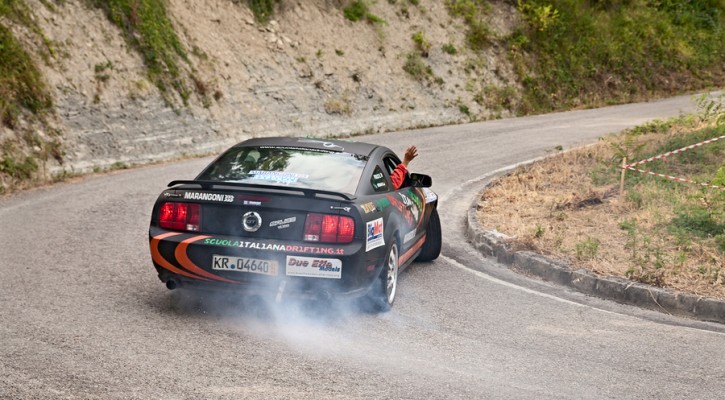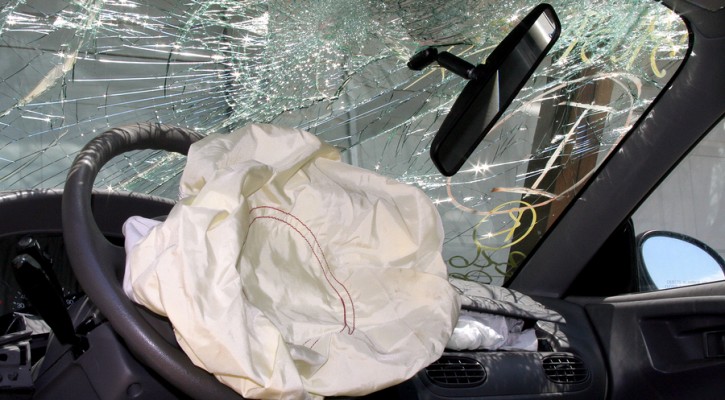Category Archive: Safe Driving

“ Swangin ” Stupid And Deadly
November 25, 2014
A new word was introduced into our vocabulary; “ swangin.” The term, first introduced by the hip hop artist Stalley on a 2013 album, means swerving from lane to lane as you drive down the road. While it may make for a good song, in practice, it’s dangerous, deadly and not at all smart.
Two days ago, an 18 year old driver who was swangin on a roadway in a business district of Houston,Texas lost control of his car, slammed into a fence and rolled over. His 15 year old female passenger, who wasn’t wearing a seat belt, was ejected from the vehicle and killed.
The problem with swangin is that, as the car swerves back and forth, the tires have less contact with the road. If the speed is high, there’s even less tire contact. Once the tires lose contact with the road, there’s no way to control the car.
No matter how good a driver you may think you are, if you’re swangin, there’s no way you can overcome the physics involved in keeping the car on the road. When you put these kinds of stresses on a car, you’re asking for trouble.
This isn’t the first time someone was killed as a result of swangin. Another Houston area teen lost his life as the result of a swangin crash in October.
Read more: ‘Swangin’ crash kills 15-year-old female passenger; driver charged

More Evidence Supports Later School Start Times
November 19, 2014
Another study has been published showing that later start times for high schools can reduce teen crashes. The study, conducted by the Eastern Virginia Medical School followed another, earlier study conducted in 2011 that looked at teen crash rates in two Virginia school districts with different high school start times.
The latest study looked at teen crash rates in Virginia’s Chesterfield and Henrico counties. After determining that there were no discernible differences in the adult crash rate between the two counties, the researchers compared the teen crash rates for the two counties. The researchers found that the crash rate for teens in Chesterfield county where school begins at 7:20 AM was significantly higher than the teen crash rate in Henrico county where school begins almost one and a half hours later at 8:45.
These findings agree with earlier, similar studies that led the American Academy of Pediatrics to issue a policy statement last August calling on school districts across the nation to adjust their high school start times no earlier than 8:30. According to the Academy statement, teen sleep rhythms naturally shift and it’s nearly impossible for teens to get to sleep earlier than 10:30 PM. Developing teens also need more sleep than adults. When schools start too early, it’s impossible for teens to get the needed amount of sleep leaving them fatigued and at risk when they drive. Other studies also point to a correlation between later start times and higher standardized test scores for teens.
All of the research points in the same direction. Later school start times for teens can save lives. School boards and administrators in districts where school starts earlier than 8:30 AM need to be made aware of this data and should be urged to move the start times to later in the morning.
For more information, read: Research reinforces link between increase in teen driver crashes and early high school start times

Red Decals For Teen Drivers Reduce Crashes
November 12, 2014
Red decals used to identify teen probationary drivers in New Jersey have significantly reduced involvement in motor vehicle crashes according to a study conducted by the Children’s Hospital of Philadelphia (CHOP). In 2010, New Jersey enacted “Kyleigh’s Law,” an act that required all 16 to 20 year old drivers who hold a learner’s permit or intermediate license to display a red decal on the front and back license plates of any vehicle they drive.
New Jersey has some of the most comprehensive Graduated Driver License (GDL) laws in the nation and the intent of the act was to aid police in the enforcement of the GDL laws . While other industrialized nations have used some sort of identifying marks for teen drivers for quite some time, New Jersey was the first state in the US to implement such a law
In the first study on the law’s effect, CHOP compared teen crash statistics from the four years before the enactment of Kyleigh’s Law with crash statistics for the two years after. After eliminating factors such as gender, age, gas prices, month of the year, and crash trends among older drivers, CHOP determined that the presence of the red decals led to an overall reduction of 9.5 percent in the crash rate among teen drivers.
Even more significant was a reduction in the cash rate among older teens with a reduction of 13 percent per year for 18-year-olds and nearly 17 percent for 19-year-olds. In the years prior to enactment of the law, there was no significant reduction in crash rates for those two age groups.
According to the CHOP researchers, an estimated 3,197 fewer intermediate drivers were involved in motor vehicle crashes after enactment of the law.
The red decals not only aid law enforcement in identifying GDL license holders but the teen drivers themselves, with essentially a red target on their back, tend to drive more safely to avoid attention. If it leads to crash reduction rates like those identified in the study and saves lives, it’s worth it. Read more: New Jersey’s Teen Driver Decals Show Sustained Link with Fewer Crashes
Photo: www.state.nj.us

When Teen Crashes Hit Close To Home
October 30, 2014
I’ve been writing articles on teen crashes and teen driving safety for years and, quite frankly, it’s becoming more and more difficult to come up with something new and fresh when the teens keep killing themselves the same way month after month.
Last week the issue hit close to home when one of my Grandson’s close friends was killed in a car crash. The details were sketchy because the crash is still being investigated but, according to the newspaper account, he applied his brakes when another vehicle entered the road, the passenger side wheels left the roadway and it appears he over-corrected. His vehicle flipped approximately four or five times and, because he wasn’t wearing a seat belt, he was ejected from the vehicle. He was taken to a nearby hospital where he was pronounced dead.
His passengers who were wearing seat belts weren’t seriously injured and were cleared at the scene.
In August, in the “Ask the Driving School Instructor” column, I answered a question on the most common type of car crash experienced by teens. In that column I wrote that the most common type of fatal teen crashes, according to all the news reports I read, involved teen drivers who:
- were either distracted, speeding, or both;
- veered off the road;
- over-corrected, sending their vehicle into a spin or tumbling over; and
- weren’t wearing a seat belt.
The tragic thing about this and all the other crashes that kill more than five teen drivers a day is that they were so easily preventable.
Teens need to be taught how to safely recover if their vehicle leaves the side of the road. The natural instinct is to jerk the steering wheel back toward the roadway (over-correct) but, at high speeds, that can cause the vehicle to spin out or flip over. If young drivers find themselves in that position, they should be taught not to give into that natural instinct to jerk the wheel back toward the road. Instead, they should grip the wheel, watch where they’re going and slow the vehicle down. After slowing to a safe speed and checking that the roadway is clear, they can then turn the wheel to reenter the road.
Most important of all, teens need to learn the importance of wearing a seat belt. Among the 16 to 20 year old age group, 55 percent of the vehicle occupants who were killed in teen crashes in 2012 weren’t wearing a seat belt. No matter how bad the crash may be, you’re always better off and have a far greater chance of surviving a crash if you’re properly buckled into your seat belt and shoulder harness. Had he been wearing his seat belt, he may have walked away from the crash with his friends. If this young man’s grieving friends take anything else away from this crash, hopefully they will learn to always wear a seat belt.
There’s no such thing as a car accident! Accidents are something we have no control over. Car crashes happen when one or more drivers make a bad choice that leads to tragic consequences. Even if you can’t avoid a crash, you can still make the right choices to survive it.

Teen Dies After Car Surfing
October 9, 2014
Another teen has died as the result of “car surfing.” The teen fell off the car and received multiple injuries including injuries to his head. He was taken to the hospital by his parents where he died the next day.
If you aren’t familiar with car surfing, it involves standing on top of a car and trying to “surf” while the car is in motion. It seems like this idiotic practice just won’t go away. It’s a popular subject on Youtube.
The problem with car surfing is that there’s no traction to maintain your footing and it’s almost impossible to maintain your balance. The law of physics that says “a body in motion tends to remain in motion” comes into play if the car turns even slightly or comes to a stop.
Given the relatively short distance from the roof of the car to the ground and the, hopefully, low speed, it may not seem like it would be too dangerous if you were to fall off. However, the low speed and distance are deceptive. Even at just 10 mph, a 140 lb teen boy whose head hits the pavement will strike the pavement with a force of more than 460 lbs. That’s more than enough force to cause serious brain trauma.
The Center for Disease Control conducted a study on car surfing in 2008 and found, among other things, that:
- The researchers found 99 reported incidents of car surfing, 58 percent of which were fatal.
- The average age of those injured or killed was 17.6, with males accounting for 70 percent of the victims.
- Three out of four car surfing deaths were caused by head trauma.
You can read the CDC press release here: CDC Media Analysis Examines Car Surfing
There’s no way to car surf safely and parents need to discuss the dangers of this practice with their teens. Read more: Wis. teen dies in “car surfing” accident, police say
